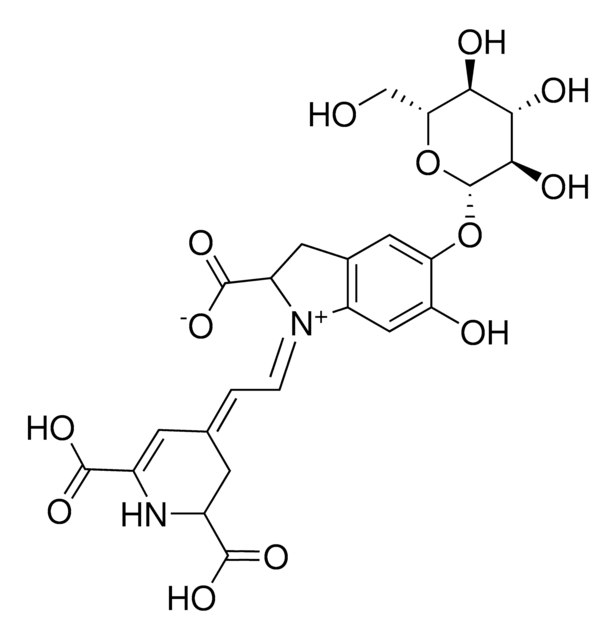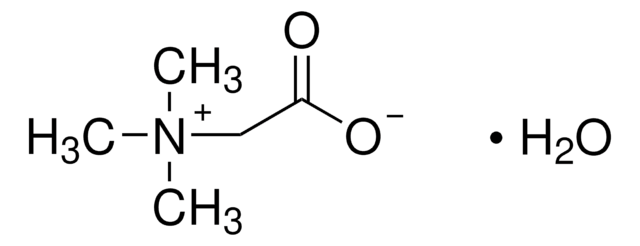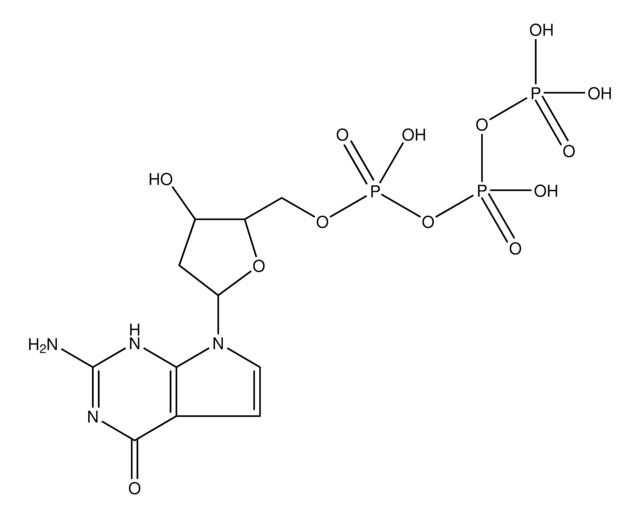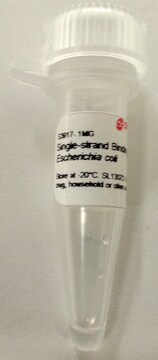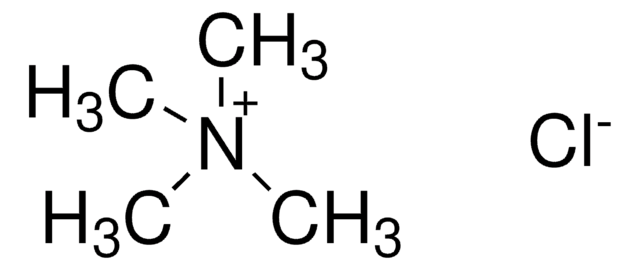B0300
Betaine solution
5 M, PCR Reagent
Synonym(s):
TMG, trimethylglycine
About This Item
Recommended Products
grade
PCR Reagent
Quality Level
form
liquid
packaging
vial of 1.5 mL
concentration
5 M
technique(s)
PCR: suitable
color
colorless
application(s)
agriculture
foreign activity
DNase, RNase, none detected
storage temp.
2-8°C
SMILES string
C[N+](C)(C)CC([O-])=O
InChI
1S/C5H11NO2/c1-6(2,3)4-5(7)8/h4H2,1-3H3
InChI key
KWIUHFFTVRNATP-UHFFFAOYSA-N
Looking for similar products? Visit Product Comparison Guide
General description
Application
- loop-mediated isothermal amplification (LAMP) reactions
- polymerase chain reaction for genomic DNA amplification
- quantitative polymerase chain reaction (qPCR) for telomere length analysis
- in the PCR amplification of CGG repeats in the genomic DNA
- reverse-transcription loop-mediated isothermal amplification (RT-LAMP) to detect severe acute respiratory syndrome coronavirus 2 (SARS-CoV-2)
- PCR amplification of DNA-directed RNA polymerase II largest subunit (RPB2)
- reverse transcription during library preparation using Smartseq2
Packaging
Storage Class Code
12 - Non Combustible Liquids
WGK
WGK 1
Flash Point(F)
Not applicable
Flash Point(C)
Not applicable
Certificates of Analysis (COA)
Search for Certificates of Analysis (COA) by entering the products Lot/Batch Number. Lot and Batch Numbers can be found on a product’s label following the words ‘Lot’ or ‘Batch’.
Already Own This Product?
Find documentation for the products that you have recently purchased in the Document Library.
Customers Also Viewed
Protocols
Protocol for high fidelity amplification of long PCR fragments up to 22kb from complex DNA mixtures and up to 40kb from simple DNA mixtures. AccuTaq LA.
Method for bacterial genome analysis and detection of pathogens. Minimize false positive PCRs through lab design and reagents tested for use in bacterial PCR applications.
Our team of scientists has experience in all areas of research including Life Science, Material Science, Chemical Synthesis, Chromatography, Analytical and many others.
Contact Technical Service


